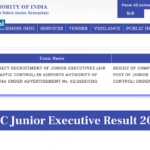The Android operating system has come a long way since its inception, evolving into a sophisticated and flexible platform powering billions of devices globally. With Android 16, Google aims to take another giant leap in redefining the mobile experience — integrating more AI, improving privacy, and enhancing device performance. As Android 15 continues its rollout, developers and tech enthusiasts are already peeking into the horizon to see what Android 16 has to offer.
Here’s a detailed look into Android 16, its expected features, device compatibility, AI integration, and everything else we know so far.
🔍 1. Android 16 at a Glance
Android 16, the next major version of Google’s mobile OS, is expected to debut officially in mid-2025, following a series of developer previews and beta releases. While Android 15 focused on system stability and foundational updates like satellite connectivity and improved NFC support, Android 16 is shaping up to be a smarter, more personalized, and AI-first update.
📅 2. Release Timeline (Expected)
Based on Google’s traditional Android development cycle, here’s what the Android 16 timeline may look like:
| Milestone | Expected Date |
|---|---|
| Developer Preview 1 | February 2025 |
| Developer Preview 2 | March 2025 |
| Beta 1 | April 2025 |
| Beta 2 | May 2025 |
| Platform Stability | June–July 2025 |
| Final Release | August–September 2025 |
The final stable release will first arrive on Pixel phones, followed by partner OEMs like Samsung, OnePlus, Xiaomi, Vivo, and others.
🤖 3. Smarter Than Ever: AI-First Android
The biggest shift in Android 16 is expected to be its deep integration with artificial intelligence. Google has already introduced features like Magic Compose, AI wallpaper generation, and smart replies. Android 16 will take this further with:
✅ On-Device Gemini Nano Integration
Google’s Gemini AI is now running on Android 15 via Gemini Nano. Android 16 will make this native, allowing devices to:
- Summarize long texts or documents.
- Suggest smart replies in any app.
- Detect scam/spam calls in real time.
- Translate content contextually inside apps.
✅ AI Personal Assistant Upgrades
Expect a new version of Google Assistant enhanced with Gemini, potentially rebranded and capable of understanding nuanced queries, multitasking, and voice-driven control over apps and settings.
🔐 4. Privacy and Security Enhancements
Privacy continues to be a cornerstone of Android’s updates, especially after Apple’s growing lead in this area. Android 16 will reportedly introduce:
🛡️ Private Space 2.0
An upgraded version of Android 15’s “Private Space” — a hidden, encrypted section of your device for storing sensitive apps, files, and media. The revamped version might support biometric-only access, auto-hide behavior, and integration with Google One’s encrypted backups.
🔒 Stricter App Permissions
Android 16 could expand its runtime permission model, especially for:
- Background location access.
- Clipboard history.
- Microphone and camera usage.
Apps that fail to comply with background data restrictions may be auto-hibernated or flagged.
🎨 5. UI Refinements & Dynamic Design
Material You brought customization, and Android 13/14 added intelligent theming. Android 16 will polish this further:
🖼️ Material You 3.0
- Dynamic Theming for Third-Party Apps: Improved API support so more apps can adapt to your wallpaper and theme.
- Fluid Animations: Faster transitions and gesture responsiveness, especially on high refresh rate displays.
- Expanded Lock Screen Customization: Custom widgets, font styles, and notification grouping may be introduced.
Android 16 might also support foldable-optimized UI elements more natively, considering the rise in foldable phone adoption.
🧠 6. Contextual Awareness
Google is working on building a context-aware OS—an Android that adapts based on your location, activity, and routine.
Examples of contextual features in Android 16:
- Adaptive Sound Modes: Automatically switch to silent in meetings or movie halls.
- Predictive App Actions: Launch your commute apps in the morning, fitness apps in the evening.
- AI-Based Battery Management: Predict battery drain patterns and proactively optimize usage.
📱 7. Device Compatibility
Android 16 will launch first on Pixel 8, Pixel 8 Pro, Pixel 8a, and Pixel 9 series. Other early adopters may include:
- Samsung Galaxy S24 / S25 series
- OnePlus 13 / 12
- Xiaomi 15 / 14 series
- Nothing Phone (2) / (3)
- Realme GT and Narzo lineup
- iQOO flagship and Neo series
Older devices with less than 6GB RAM or older than Snapdragon 870 may not qualify for full Android 16 updates.
⚙️ 8. Developer-Focused Tools
For developers, Android 16 offers:
- Improved Jetpack Compose features
- Expanded support for foldable and large-screen devices
- Battery usage insights via new APIs
- AI-driven app shortcuts and actions
Also expected are better testing tools in Android Studio Hedgehog for debugging background processes and sensor usage.
📡 9. Satellite Connectivity Expansion
Android 15 introduced the framework for satellite connectivity. Android 16 could go further by enabling:
- Two-way messaging via satellite
- Integration with services like Starlink or Globalstar
- Emergency alert systems via satellite networks
This could be a game-changer in rural or disaster-prone regions.
🧩 10. Android 16 on Tablets, Foldables & Wearables
Android 16 isn’t just about smartphones. Google’s push toward a unified Android experience across form factors continues.
On Tablets:
- Improved split-screen and drag-and-drop functionality
- Better stylus support with lower latency
- Tablet-specific UI enhancements
On Foldables:
- App continuity and resizing improvements
- Dynamic app layouts depending on fold orientation
On Wearables (Wear OS):
- Possible Wear OS 5 based on Android 16 kernel
- Better battery optimization for smartwatches
🔋 11. Performance & Battery Optimization
Google is expected to roll out deeper machine learning-based optimization to:
- Predict user behavior
- Limit unnecessary background processes
- Delay non-essential app wake-ups
Expect longer battery life, even on smaller 4000mAh batteries.
🔄 12. Seamless Updates & Recovery
With Android 16, the seamless update mechanism (A/B partitions) could become mandatory for all OEMs, ensuring:
- Faster system updates
- No downtime or failed update issues
- Ability to roll back to previous versions in case of errors
✅ 13. Should You Be Excited for Android 16?
If you are a fan of AI-driven automation, enhanced privacy, and a smoother Android experience, Android 16 might be your dream OS. It builds on the foundation laid by Android 13–15, but adds intelligence, context, and flexibility that brings it closer to being a truly adaptive operating system.
❓FAQs – Android 16
Q1. When will Android 16 be officially released?
Android 16 is expected to be released in August or September 2025 for Pixel phones.
Q2. What devices will get Android 16 first?
Pixel 8 series and Pixel 9 (upon launch) will be the first. Samsung and OnePlus will follow shortly after.
Q3. Will Android 16 have more AI features?
Yes, it will deeply integrate Google Gemini AI, enabling smart actions, summaries, and contextual responses.
Q4. Will my Android 12 or 13 device get Android 16?
Only if the OEM provides support. Typically, devices under 2 years old with 6GB+ RAM are eligible.
Q5. Can I try Android 16 early?
Yes, developer previews and beta versions will be available by early 2025.
🔗 Stay updated on Android 16 developments here:
👉 https://developer.android.com









